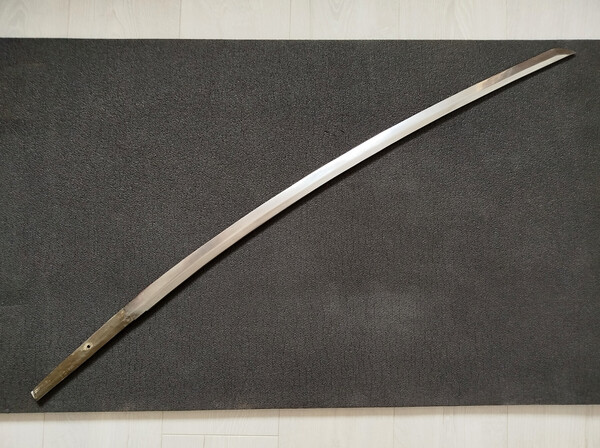Thank you for your answers and your words of support!
These three years weren't bright for us and it seems we have even darker times ahead. Yet things are much simpler for me these days. There is a job and it has to be done. It was much harder to make the first step in 2022 when a full scale invasion began. Yesterday it was three years since I waved my family goodbye at the railway station in Kyiv. Haven't seen them since then. Also in the last months it became harder and harder to switch my mind from my everyday tasks to something civil. So the sword, even being fake, was worth buying, because it helped me to trick my own mind.
Brian, you surprised me by your knowledge on Reibert. I am used to getting some goods from there. When it comes to blades, just before I enlisted, I bought a replica of Spyderco Schempp EuroEdge from here for a pocket knife. Turned out to be very useful in soldiers' everyday life. Later I replaced it with a smaller blade, Kershaw XCOM. I have some weakness for daggers so no wonder when post war but genuine Fairbern-Sykes dagger turned out on Reibert, I bought it.
As for the Ratnik, they are as rare as the AK-12 itself. Most of the enemy troops are issued with ordinary AK-74, at best it's AK-74 with factory installed upgrade kit. I'll ask some people, but chances to get the knife are low. There is also a question of how to send it abroad. Customs wouldn't pass it through.
Also, let me explain why I decided that there is a possibility of the blade being genuine. You see, not being an expert on nihonto, I do have some expertise on other subjects. Long story short:
Before the war I had a small motorcycle workshop. To anyone interested here is my website https://www.gazzz-garage.com . I still keep it online in hope that one day I will return to my projects. To keep things going I designed and manufactured conversion kits for motorcycles. I had been selling them all over the World. Did other jobs, like rebuilding engines and making custom spoked wheels too. Sure, my main goal was "full scale" custom projects. I liked to work alone, but one couldn't do all the jobs. So I worked out cooperation with subcontractors. The main things that I've got done by subcontractors on a regular basis were: fiberglass works, welding, paint job, seat cushioning and upholstering, glass beads blasting, laser cutting and all kinds of machining, be that surfacing of cylinder head or CNC milling. I still had a lot of different kinds of work done by myself, like overhauling engines (could even mix parts from different models of motorcycles in one engine), suspension, wheel assembling and truing, metalworking and polishing. But narrowing my specialities I was able to perfect them with every project finished or job done. Working on engines and other parts I learned to "read" parts, this helps a lot when you receive a gearbox in the bucket and have not only sort it out but assemble with all washer oriented as they were by factory. Another thing is polishing. I did a lot of aluminum polishing and with old Japanese engine cases I not once encountered non-homogeneity of aluminum alloy of which cases were cast. It means that some areas of the surface were softer than others. It wasn't visible during dry or wet stages of sandpapering, it started to show itself on the stage of polishing. And the longer you use a buffing wheel on such a surface the more "damascus" pattern of aluminum becomes visible. And that's only one thing. With time I worked out my own methods on how to work with such surfaces.
In the case of tang and machi that don't line up, it was obvious to me that someone messed them and that was done at least twice. From what I could see, I see the initial surface of the tang with marks of filing. Then there is the first grinding. From the look of it it was done with a grinding wheel motor. Someone tried to hide this messy job with chemicals. This was followed by another course of cutting and grinding, though this time no one tried to blacken the marks.
As for the hada, I am certain that the blade was treated with a buffing wheel and polishing compound. Seeing how it went with tang and knowing the local "traditions" of polishing, I am more than sure that both, buffing wheel and compound were quite coarse. Also such treatment usually utilizes the concept that could be expressed like "press harder, keep longer". At that time I was aware of the difference between how damascus steel is made and how hada is formed. Also I was aware of the superficiality of my knowledge. So I made a guess that such treatment will expose hada and may cause visual effects similar to damascus. Especially if the remains of the polishing compound wasn't not removed completely. Also I took into account that even after such brutal polishing hada doesn't look like phony damascus katanas from ebay.













